Home » Sustainability
The Nitrates Directive requires Member States to develop a NAP every four years that details the measures to be taken to help prevent pollution of surface waters and groundwater from agricultural nutrients. The NAP is also an important tool in helping to secure the Nitrates derogation. A consultation on the contents of the Sixth NAP was published at the start of November and IGFA has responded. See here.
The fifth NAP included a number of measures that are important for the feed sector including
In the IGFA response we have reiterated our concerns and recommendations on these issues and also welcomed that the a feed database would not be progressing. We have continued to highlight that complexities in the feed chain, not to mention an inability to record trade along the border, would make it impossible to track all trade in feed. A feed database would not capture a realistic picture of feed use and would therefore not be an adequate tool to help farmers efficiently calculate nutrient surplus values.
The new measures proposed in this draft sixth NAP do not concern feed specifically but many involve measures that promote engagement with farmers on nitrates issues. We have therefore kept our comments short on these new measures but highlighted the need for improved communication with farmers on nitrate issues, more effective interaction with farmers and advisers on the conditions that relate to animal feeding under the Nitrates rules and the need to ensure farmers are aware that reducing crude protein in feed without assessing protein levels in grass, and the overall needs of the animal, can have a negative impact on animal health and productivity.
At the start of November DAFM circulated a report on the Third Industry Survey on Crude Protein Content in Compound Animal Feed. The survey was done with the support of IGFA and follows up on surveys done in 2020 for the years 2015, 2017 and 2019 and in 2022 for 2021 data. This latest survey, completed in 2025, incorporates data collected for 2023 and 2024. The response to this latest survey from feed mills was very good representing 87% of overall national feed production and therefore gives an accurate picture of the current situation.
The results indicated that average crude protein content of dairy, beef, pig and poultry feed for 2023 was 16.1%, 15.1%, 16.3% and 18.1% respectively. This showed a slight increase in dairy, beef and pig feeds while there was a slight decrease in poultry feed. Average crude protein content of dairy, beef, pig and poultry feed for 2024 was 16.1%, 15.1%, 16.2% and 18.0% respectively. This showed a stabilizing effect on dairy and beef and a decrease in pig and poultry feed. Across the full 2015–2024 period, crude protein levels declined for dairy, beef, pig and poultry feed by 3.1%, 0.7%, 6.8% and 0.6% respectively.
The report notes that while a reduction in crude protein % was recorded for all feed categories (except poultry) since 2015, there was an increase in actual crude protein over the time period examined due to increases in volumes of compound feed produced.
IGFA has consistently highlighted that there are limits to how much crude protein in compound feed should be reduced . Reducing crude protein in animal feed without assessing protein levels in grass, and the overall needs of the animal, can have a negative impact on animal health and productivity.
Access the full report here (password is the same as for IGFA member only pages).
Environment Commissioner Roswell announced in late September that she was “considering a postponement of the entry into application of the EUDR, currently foreseen for 30 December 2025, for one year”. However, on 21 October a new Commission proposal was published and the 12 month delay is not proposed for all operators. The Commissioner emphasised that there was a need to make things easier for small and micro operators by giving them the one-year postponement but said there is a need for a “targeted proposal” to solve the IT problem and hence “no need” for the full year postponement for all operators. The Commission press release says that “this means that the EUDR will enter into application on 30 December 2026 for micro- and small enterprises. For large and medium companies, the date remains 30 December 2025 but to ensure a gradual phase-in of the rules, they will benefit from a grace period of six months for checks and enforcement”.
The Commission proposal aims to simplify measures for and reduce the burden on downstream customers with the removal of the requirement for them to submit Due Diligence Statements. The reporting obligations and the responsibility would be focused on the operators first placing the products on the market. There is also further simplification proposed for micro and small primary operators from low-risk countries who sell their goods directly on the European market. These will also cover close to 100% of farmers and foresters in the EU.
FEFAC , the European Feed Manufacturers Association highlighted the positives associated with simplifying certain requirements of EUDR for downstream operators and micro-enterprises, but said that the proposal has created even more legal uncertainty on conditions applicable for soy deliveries as of 1 January 2026 since a large part of the EU’s demand of 30 Mio tons of soy products has already been contracted for Quarters 1 and 2 in 2026. FEFAC is strongly recommending to member states and MEPs that EUDR penalties for large operators should be postponed until the end of 2026 for all, including large operators. They say this is necessary to prevent a disruption of essential soy deliveries for the feed and livestock sectors and prevent significant cost increases for these sectors.
EU member states and the MEPS need to approve the final text and the proposal will therefore be discussed at length over the coming weeks and months. Industry stakeholders will continue to go through the detail and to look at the economic impact of this latest new proposal.
On 23 September 2025, Environment Commissioner Roswall sent a letter to MEPs and the Danish Presidency saying that she is “considering a postponement of the entry into application of the EUDR, currently foreseen for 30 December 2025, for one year. The regulation was originally scheduled to apply from 30 December 2024 but was deferred last year until 30 December 2025. However, implementation problems have continued and although there is not yet an official statement from the Commission, the letter points to the lack of technical readiness of the EUDR Information System as the main reason for the proposed delay. The Commissioner has told the press that more time is needed to make sure the IT system is working properly and to avoid disruption to business and uncertainty for authorities and stakeholders. She has also indicated that “simplification of different angles” of the EUDR will be discussed with member states.
DAFM has written to Feed Business Operators (on 28 April) reminding them that a maximum of 14% crude protein is allowed in concentrate feed fed to cattle aged 2 years and over at grass between 15th April and 30th September. This requirement applies to all farmers but it does not apply where cattle are not outdoors full time at grass.
Even in situations where cattle are at grass full time, DAFM remind FBOs that ‘the Department has always and will continue to allow for situations where a higher level of crude protein is required in concentrates to maintain animal welfare or to meet the animal’s dietary needs’. At inspection, DAFM ‘will accept written confirmation from the feed supplier, a recognised ruminant nutritionist, or an accredited Farm Advisory Service (FAS) advisor stating that a higher level of crude protein is required’.
DAFM has also provided a template, that it will accept as a form of written confirmation justifying if a higher level of crude protein is required, however other forms of letters that provide the appropriate info will also be accepted. This letter should be available on inspection. DAFM also says that ‘Records of purchased feed should include the quantities and types of concentrate feed, including crude protein content, fed to livestock on the holding…these records should be maintained for 5 years and made available for inspection if requested’.
Government has consulted on additional measures to include under the Fifth NAP . It proposes to include 2 new measures on CP under the Good Agricultural Practice Regulations.
1. Voluntarily reduction of CP beyond legal obligation should be recognised for dairy farmers that inform DAFM that they are opting to feed an annual average CP in concentrate to dairy cows that is lower than the national average CP content used to calculate standard excretion rates
2. The maximum CP content will be reduced to 14% for concentrate feedstuff fed to bovines aged two years and over at grass between 15 April and 30 September 2025
The consultation also proposes non regulatory measures and says ‘to enable efficient calculation of nutrient surpluses, an animal feed sales/import database would complement the National Fertiliser Database’. IGFA has submitted a response which can be viewed here
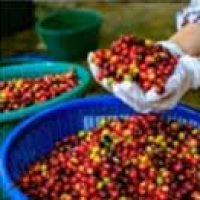
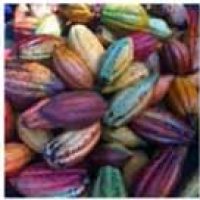
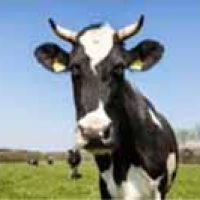

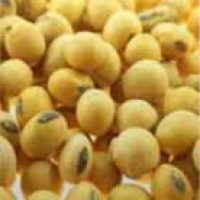
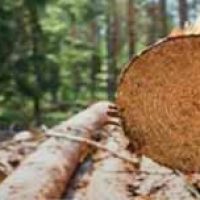
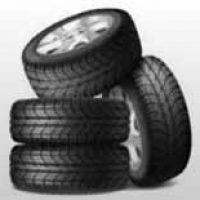
EUDR has been at the top of the agenda throughout September. The EUDR was due to come into effect on 30 December 2024 and aims to ensure that products made available on the EU market are not grown on deforested land. It covers coffee, cocoa, cattle, palm oil, soy, wood and rubber. There have been ongoing calls over many months from industry, some member states and exporting countries to postpone the implementation deadline. Most recently, German Chancellor Olaf Scholz, Italy’s Minister for Agriculture and the Director-General of the World Trade Organization have added to this pressure, emphasising that the information necessary from the Commission to implement the regulation was not available and this would create significant disruption and risks in supply chains.
On 2 October 2024 the Commission finally made clear its intended direction by announcing that it was proposing an extra 12 months of phasing-in time for the EUDR.
The commission said “If approved by the European Parliament and the Council, it would make the law applicable on 30 December 2025 for large companies and 30 June 2026 for micro- and small enterprises”. They added “the Commission considers that a 12-month additional time to phase in the system is a balanced solution to support operators around the world in securing a smooth implementation from the start.” In addition to this announcement, the Commission published the long-awaited updated Guidance Notes and FAQs document on EUDR.
Reactions to the postponement of the deadline have varied with some claiming this delay damages the EU’s credibility on climate change issues. Others, including FEFAC, the European Feed Manufacturers Association, have welcomed the move saying it will help “to facilitate the transition towards EUDR compliant value chains”.
Although the Commission has proposed this move, changes to the implementation deadline also need to be approved by the member states at Council and by MEPs in the European Parliament. The timetable for this is unclear as yet.
IGFA has been calling on DAFM to provide clarification regarding the concentrate 15% crude protein limit. DAFM has published a Technical Note here. The Department has also provided this template that they will accept as a form of written confirmation from the feed supplier. This should be available on inspection and where it is not available it will be requested to be provided within a timeframe declared by the inspector. Other forms of letters that provides sufficient justification by the appropriate advisors will also be accepted.
There has been some confusion on other aspects of the detail so IGFA had the below questions answered by DAFM on 26/03/24
Question – Is this requirement only for dairy cows on the holding? Answer – No, this measure is focused on dairy cows and cattle over two years and does not apply to livestock under two years.
Question – What will be the level of Crude Protein (CP) allowed in concentrate feeds for grazing livestock at grass? Answer – Bovine livestock greater than two years old, including dairy cows, fed on a 100% grass forage diet during the main grazing season will be required to comply with a maximum of 15% CP (on a fresh weight basis) between 15th April to 30th September in 2024.
Note: If higher levels of crude protein are required, this needs to be justified and certified by the appropriate advisor.
Question – Who qualifies as an appropriate advisor for the purpose of this certification? Answer – An appropriate advisor is the compounder, supplier of feed, nutritionist or FAS approved agricultural advisor.
The Minister for Agriculture, Charlie McConalogue, T.D, announced on 12 March 2024, that the 2024 Nitrates Derogation application system is now available on-line. For full details of press release click here. As part of other adjustments, an “opt-in” measure to feed a lower level of crude protein has been introduced. This allows farmers who opt to feed lower crude protein concentrates to apply a lower excretion rate to their dairy herd and give them the opportunity to use this lower rate when calculating their holding’s stocking rate for 2024. Download DAFM FAQ here.
On 1 December DAFM published an updated FAQs document on the Nitrates derogation. Members will know that due to water quality concerns, we are obliged to move to a reduced derogation limit of 220 kg N/ha from January 2024. The document provides answers relating to the Nitrates Derogation and the reduction in the maximum limit for derogation farmers. Download the FAQs document here.
Prof Finbar Mulligan and Prof Karina Pierce from UCD attended the IGFA Feed Committee on Tuesday 5 September. They presented the results of research done on the ‘Development of a High-Output Grass-Based Spring Milk Production System’. The research aimed to answer the below questions
The work is funded by Dairy Research Ireland and looks at nutrition, grassland management, genetics, nutrition, financials and environmental metrics. The full presentation is available here.
Animal feed companies around the country have once again participated in a survey of crude protein levels in feed rations. The survey was managed by DAFM in partnership with IGFA and aims to provide accurate information on current practices. The results show that overall protein levels have continued to follow a positive environmental downward trend since 2015.
Crude protein is required in animal diets to ensure optimal health and production but levels in excess of what is necessary can be associated with ammonia and nitrous oxide emissions. This is why the government’s Climate Action Plan and the DAFM Ag-Climatise roadmap contain goals to reduce excess protein in animal diets.
The survey was completed by feed manufacturers on crude protein levels in compound feed in 2021 and added to the information already collected from the industry in 2020 for the years 2015, 2017 and 2019. The results highlight an excellent response rate to the survey, representing 99.7% of overall national feed production. This latest data confirms that overall protein levels continue to follow a positive environmental downward trend since 2015. A reduction in crude protein was recorded for dairy and beef and although there was a slight increase for poultry, the biggest reduction has been in pig feed with an overall reduction of 1.3% over the period. Download DAFM full report here.
The report also notes that the actual quantities of crude protein in animal feed has increased over this time period due to increases in volumes of feed. Although outside the scope of the report, it is important to note that the increase in the volume of feed manufactured, especially the increase in 2021, was due to increased demand from farmers for compound feed. This was a response to weather conditions that resulted in reduced availability and therefore intake of grass and fodder in some parts of the country. Farmers were more reliant on compound feed to ensure the health, welfare and productivity of their animals and to compensate for the consequent drop in grass intake levels.
Commenting on the Survey results Maeve Whyte, IGFA Director General said
“It is clear from the excellent response rate to the survey that this is an accurate picture of crude protein levels in livestock rations. It is so important to have relevant, reliable data so that future policy decisions in this area are based on accurate, correct information”. “IGFA members will continue to talk to their farming customers about reducing crude protein where possible. Higher protein levels are sometimes necessary in an animal’s diet but we are working to ensure that the needs of the animal and environmental concerns are taken into consideration. As always, we encourage farmers to discuss feed options with their feed suppliers”.
Bord Bia hosted a webinar in the middle of June with the aim of giving an overview of latest developments on the Sustainable Soy discussion and information on the upcoming EU Deforestation Regulation.
The webinar kicked off with a presentation on the current situation in Ireland and with details of the report done in partnership with IGFA on the soy present in Irish Supply Chains. DAFM then gave an overview of the changes that will be introduced under the recently agreed EU Regulation which aims to stop the import of products into the EU that might be associated with deforestation. John Colman, Chairman of the IGFA Feed Committee, joined a panel of industry stakeholders to discuss the developing needs of the Irish market and the sourcing of sustainable soy products. A link to the recording is available here and you can also view the full presentations.
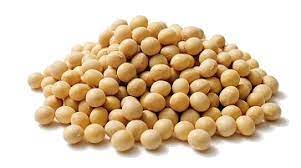
Under the 2023 Nitrates Derogation the general conditions state that ‘A maximum crude protein content of 15% in concentrate feed for grazing livestock must not be exceeded between April 15th and September 30th 2023. This information must be included in feed concentrate records farmers submit annually’. Full details are available on the DAFM website here.
As there is some confusion on the detail, IGFA confirmed answers to the below questions with DAFM Nitrates Division on 3 March 2023.
Question – Is this requirement only for dairy cows on the holding? Answer – No, this measure is focused on dairy cows and cattle over two years and does not apply to livestock under two years.
Question – What will be the level of Crude Protein (CP) allowed in concentrate feeds for grazing livestock at grass? Answer – Bovine livestock greater than two years old, including dairy cows, fed on a 100% grass forage diet during the main grazing season will be required to comply with a maximum of 15% CP (on a fresh weight basis) between 15th April to 30th September in 2023.
Note: If higher levels of crude protein are required, this needs to be justified and certified by the appropriate advisor.
Question – Who qualifies as an appropriate advisor for the purpose of this certification? Answer – An appropriate advisor is the compounder, supplier of feed, nutritionist or agricultural advisor.
The nitrates derogation will run until 2025 but is subject to an interim review in 2023. This review is planned to be completed by September 2023.
For many years IGFA has been working with our European Colleagues on the Environment Footprinting of Animal feed. The GFLI – the Global Feed LCA Institute – is an independent animal nutrition and food industry institute with the purpose of developing a publicly available Animal Nutrition Life Cycle Analysis (LCA) database. This database contains high quality datasets for feed ingredients. The GFLI database is the main international source of LCA information on animal feed production and contributes to making the sector more sustainable. It contains environmental impact data of raw feed materials, available from different geographical areas.
In discussions with the industry on environment footprinting, IGFA always recommends using the GFLI database as it free, updated and constantly evolving, high quality and ensures everyone calculates the environment footprint in the same way. The GFLI helps feed businesses complete the first step of the footprint calculation which saves time and money and gives the opportunity to benchmark different feed compositions. It is a valuable tool to help create feed with the lowest environmental impact.
Although there are a number of datasets in use that give LCA figures for lots of feed materials of different origin, in our view the GFLI is the most professional available. IGFA therefore recommends that if feed manufacturers are calculating environment footprints for their feed, that they use the GFLI.
On the afternoon of the IGFA Annual Dinner in January 2023 we hosted a workshop for members on Environment Footprinting in the Animal Feed Sector. It was a lively event with lots of discussion on a very important topic for our industry. See the introductory presentation explaining the GFLI here and if members want more detailed info they can view the whole event on our IGFA Training pages.

The Government published its latest Climate Action Plan 2023 on 21 December 2022.
IGFA has prepared a summary of the document and the key points for members here.

The document outlines themes, targets and measures needed to deliver GHG reduction from agriculture in the coming years. Specific to the animal feed sector it refers to the need to improve how farmers feed their animals by reducing the crude protein content of their feed and the need for improved knowledge transfers and the provision of data and analysis to farmers on the benefits of improved animal feeding. It also highlights the need to develop a methane-reducing slurry additive and to work with all stakeholders to develop a slow-release bolus pasture-based feed additive.
A key theme is the ‘mobilisation of land diversification options for livestock farms’ towards activities that have a reduced climate change impact. This includes moving to tillage and availing of the opportunity ‘to increase the volume of Irish grain being used in the high-value drinks industry, and as a source of protein for the livestock industry’. The target set is to have up to 360,000ha of tillage by 2025 and 400,000ha by 2030. The plan says that in 2022 there were approximately 348,500 hectares of tillage crops and that this increase was supported by a tillage incentive scheme. It also refers to the potential to produce 40,000 hectares of beans which would provide a native source of proteins.
Significant targets are also set for the domestic biomethane industry and a National Biomethane Strategy is planned for publication in the next 6 months. By 2025 the target is to produce up to 1 TWh of biomethane rising to 5.7 TWh by 2025. To achieve this, the goal is to construct up to 20 Anaerobic Digestion (AD) plants of scale by 2025 and 200 by 2030. This biomethane would be made from biological feedstocks including food waste and agricultural feedstocks such as animal manures, grass and grass silage.
In June 2021 IGFA members agreed and published a Sustainability Action Plan that will focus our work on sustainability issues over the coming 18 months.
The plan outlines commitments on key environmental themes for our industry including crude protein, methane reducing additives, sustainable soy, environmental footprinting and expanding our expertise.
This plan will build on the many activities currently being undertaken by the Irish Feed Industry to enhance its environmental performance and help us down the path to continuous improvement. It is an important 18 months ahead as the government plans to start discussing with industry how to deliver Ag Climatise priorities and achieve climate change targets. Our action plan will help us align and work collaboratively to achieve common goals. Read the full IGFA Sustainability Action Plan.
This roadmap was launched by government in December 2020. It sets out a vision for a ‘climate neutral agriculture sector by 2050’ and includes 29 specific actions aimed at reducing the environmental footprint of Irish Agriculture. IGFA has prepared a document here which summaries the main points of interest for the Irish animal feed industry.
The European Commission published the Farm to Fork Strategy (F2F) on 20 May 2020. This strategy aims to build more sustainable food systems in Europe. It outlines EU plans for the future on a huge range of food-related policies from feed additives to pesticide use to the future CAP. An IGFA summary of the strategy highlighting the points of interest for our members is available here.